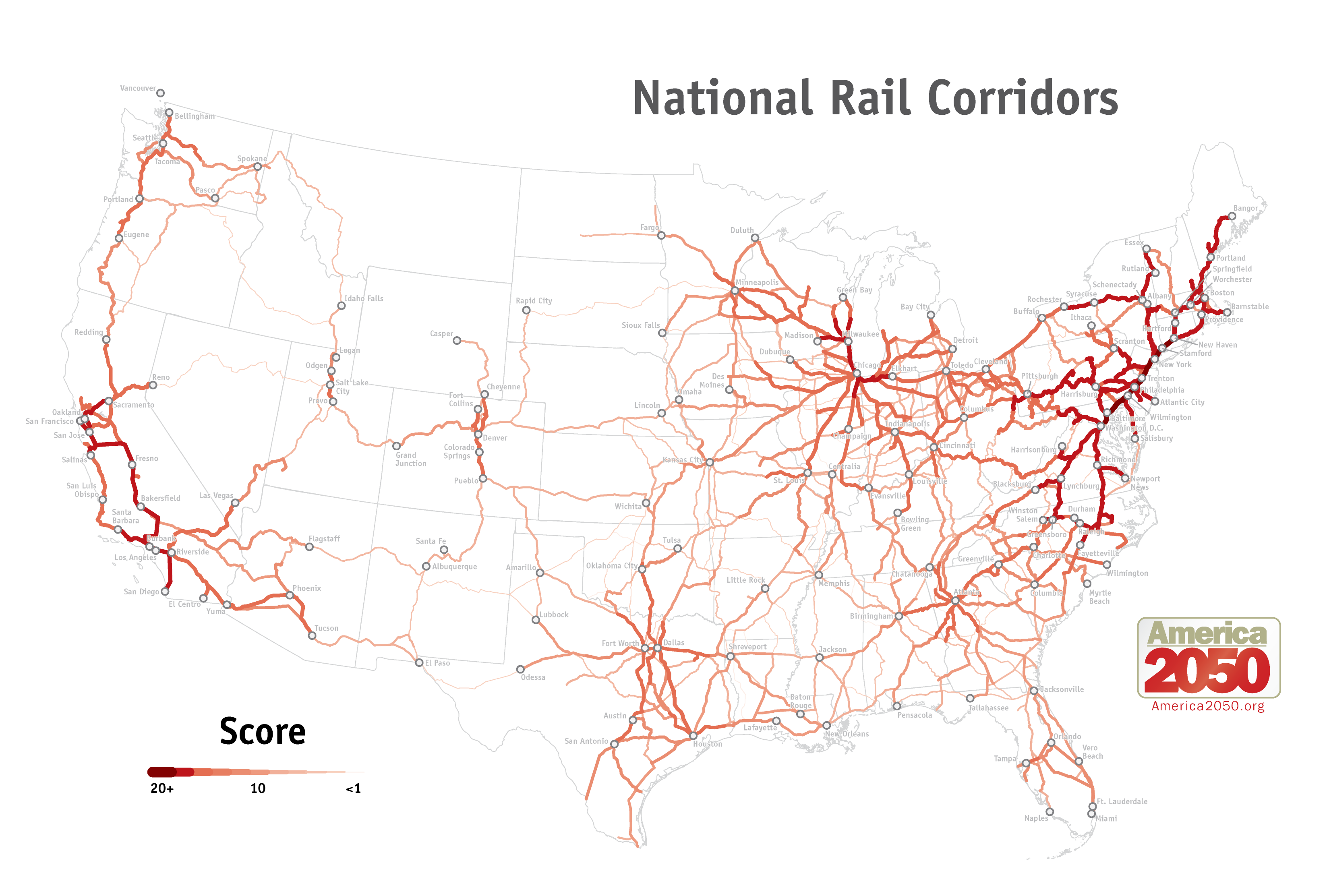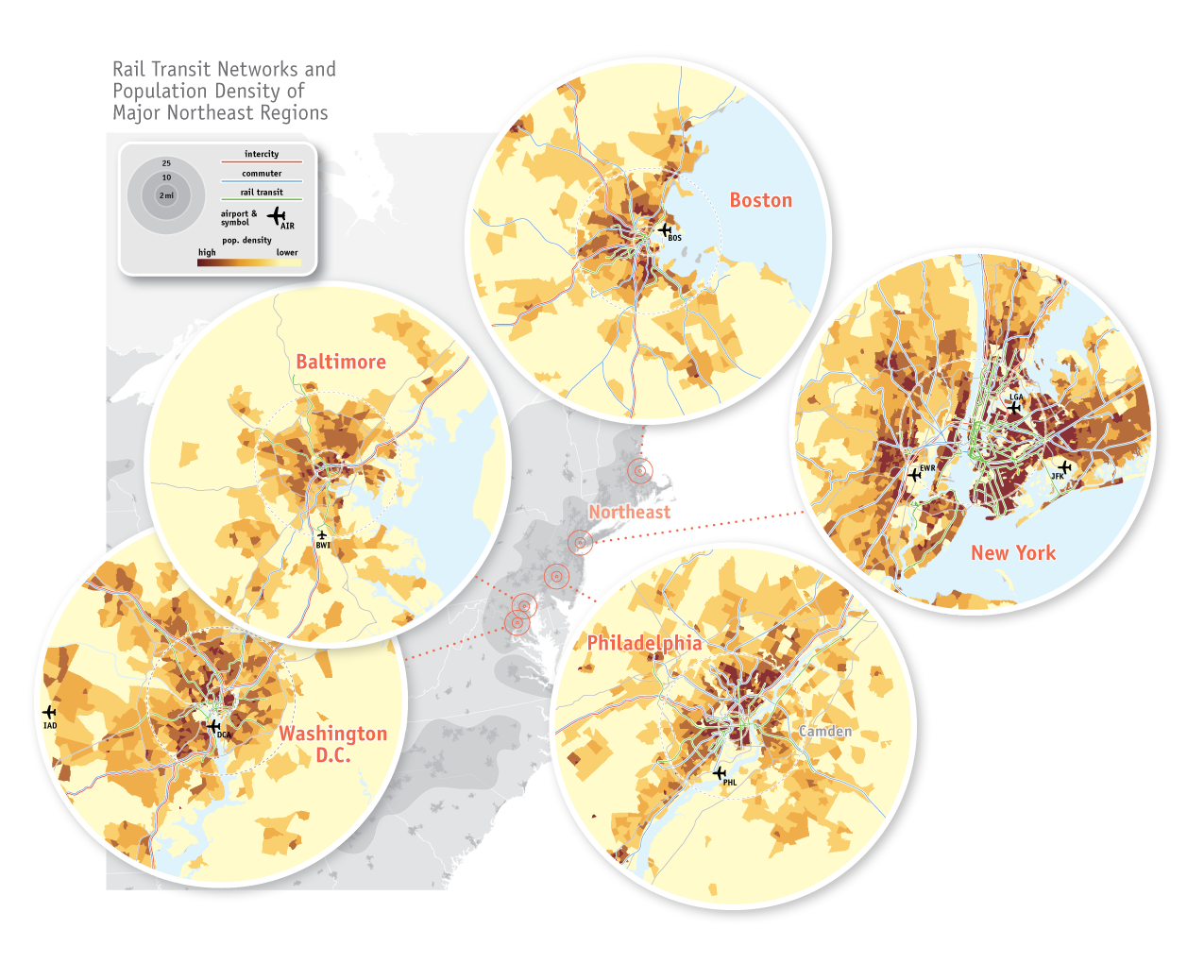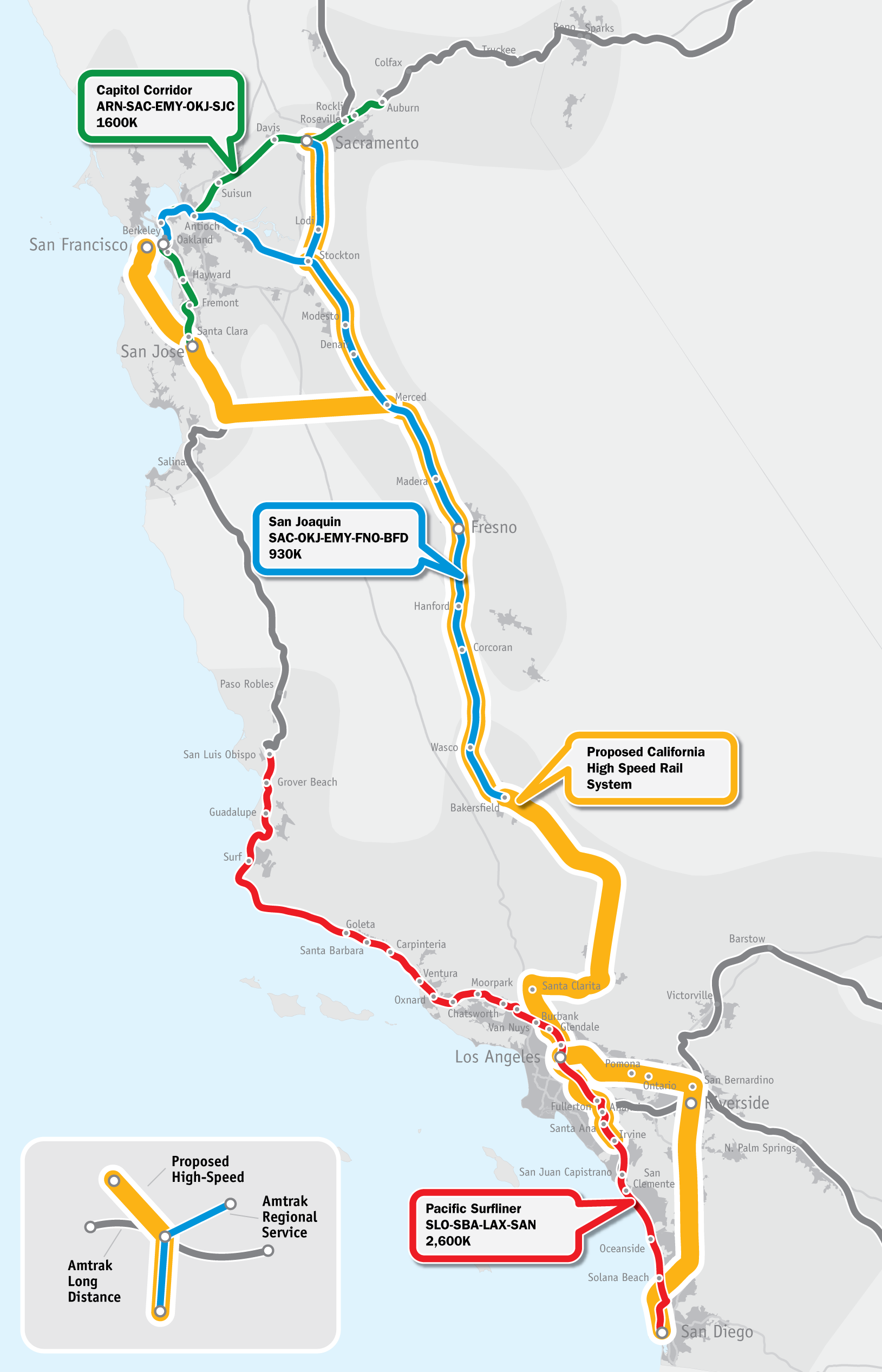AMERICA 2050
Update: On January 13th, America 2050 Released an Important Message Regarding This Report
Executive Summary
The United States has embarked on a program of building high-speed rail corridors in the nation’s most urbanized corridors and regions. This is a bold step toward meeting the infrastructure needs of the coming century, including providing capacity for economic growth in regions where air and road congestion threaten economic competitiveness and quality of life.
However, given the newness of the program, there is a steep learning curve for states and regions in developing high-speed and even “classic” intercity passenger corridors. This report aims to educate the public and decision makers about the elements of success for high-speed rail as measured by factors that contribute to ridership demand for these services, particularly as they apply to the unique spatial attributes and travel patterns of America.
This report provides the first and only comparative study of close to 8,000 existing and proposed rail rights of way (of fewer than 600 miles in length) and their relative ability to attract passengers. In doing, the analysis reveals which regional corridors are best suited for high-speed rail in the United States, based on factors that have contributed to rail ridership in other systems around the world. Our approach evaluates and scores each corridor based on parameters related to regional population, employment concentrations, transit accessibility, air travel markets, and composition of employment sectors, among others. Those corridors receiving the highest scores in our analysis are most suited to attract ridership and should be the focal point of federal investments.
The federal government has defined three categories of high-speed rail in the United States: Core Express Corridors, Regional Corridors, and Emerging/ Feeder Routes, to reflect the great variety of regional characteristics and suitability for passenger rail nationwide. This is not a “one size fits all” program. While not every corridor in the country may be able to generate sufficient demand to justify Core Express Corridors at this time, incremental investments in corridors suited for Regional and Emerging/ Feeder service can meet important transportation needs while building markets for passenger rail that may someday justify investments in Core Express Corridors.
Research Findings
- High-speed rail works in very specific conditions, primarily in corridors of approximately 100–600 miles in length where it can connect major employment centers and population hubs with other large and moderate-sized employment centers and population hubs. Such corridors exist primarily in the nation’s 11 megaregions, where over 70 percent of the nation’s population and productivity (as measured by regional GDP) is concentrated.
- Some of the most promising rail corridors for attracting ridership in the United States are in corridors of less than 150 miles. These shorter corridors, such as New York-Philadelphia, Los Angeles-San Diego, and Chicago-Milwaukee, can anchor investments in longer, multi-city corridors and be priced to attract both high-speed commuting and intercity trips.
- Very large cities are potentially powerful generators of rail ridership. The presence of a very large city on a corridor with medium-size and smaller cities has greater impact than connecting medium cities of the same size for generating ridership.
- Composition of the workforce within a metro region may have significant implications on regional intercity travel. People who work in knowledge industries, such as those in the financial sector, tend to be more mobile and travel more for business than those in industrial sectors.
Recommendations
- The federal government should adopt a quantitative approach to evaluating rail investments across the country in line with clear objectives for the national rail program. This paper presents one such approach that can be used to evaluate corridors against a set of factors based on national data, such as population, employment, and travel data.
- The federal government should prioritize capital investments in corridors with the greatest opportunity to attract ridership and thus offset operating costs. The United States lacks recent data on long distance automobile travel, the most common mode for trips of up to 1,000 miles. The last study of this kind, the 1995 American Travel Survey is outdated and of limited use. A new American Travel Survey should be initiated, making use of mobile and GPS technologies, while protecting privacy data. Updated, national, long distance, travel data is necessary to improve forecasts for high-speed rail ridership, which today are often based on outdated data and assumptions.
Download full report (PDF): High-Speed Rail in America
About America 2050
www.america2050.org
“America 2050 is a national initiative [in collaboration with Regional Plan Association] to meet the infrastructure, economic development and environmental challenges of the nation as we prepare to add about 130 million additional Americans by the year 2050. America 2050 is guided by the National Committee for America 2050, a coalition of regional planners, scholars, and policy-makers to develop a framework for the nation’s future growth.”
Tags: America 2050, HSR, Megaregions, Regional Plan Association, RPA









 RSS Feed
RSS Feed